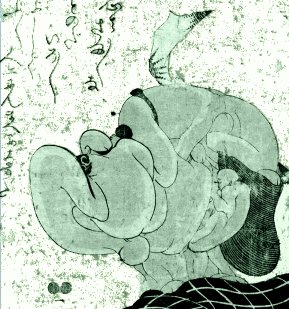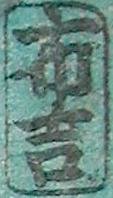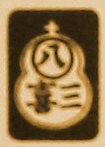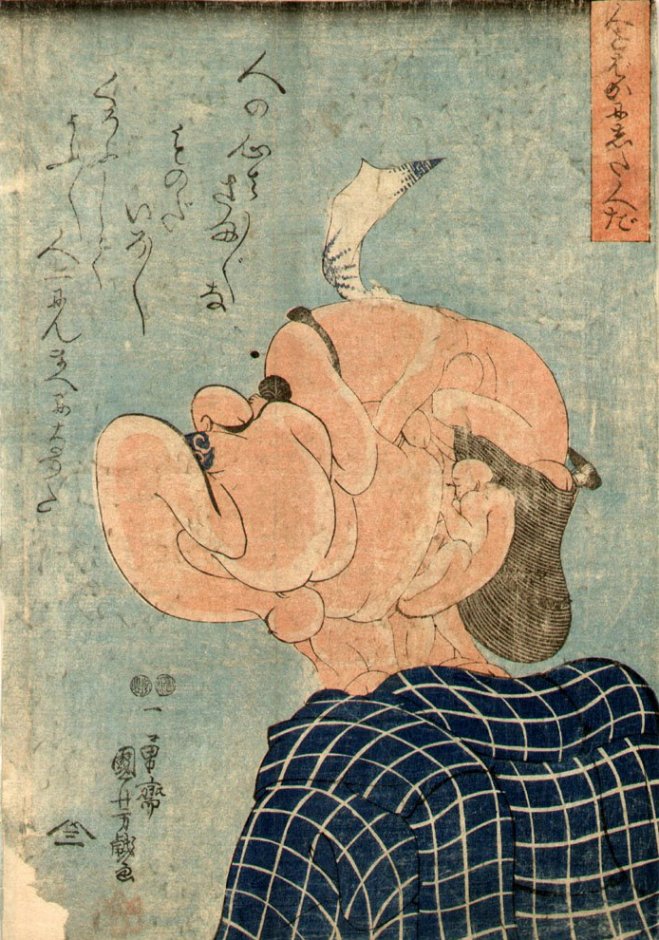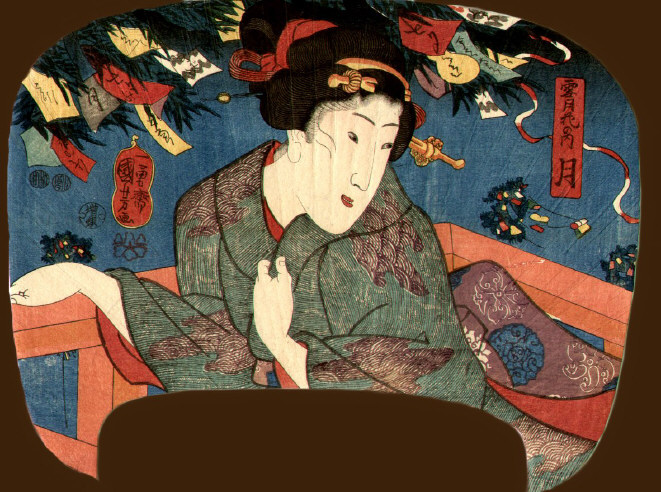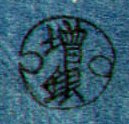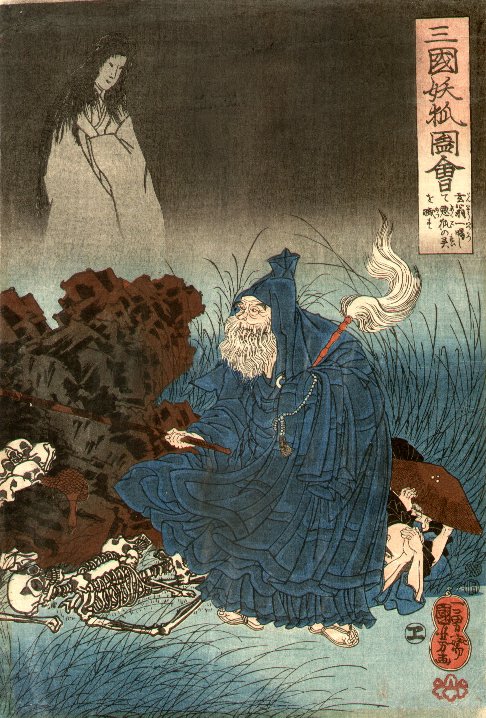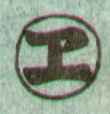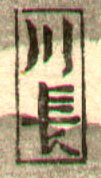
JAPANESE PRINTS
A MILLION QUESTIONS
TWO MILLION MYSTERIES
Ukiyo-e Prints浮世絵版画 |
|
formerly Port Townsend, Washington now Kansas City, Missouri |
|
|
NOTE THAT on July 8, 2008 we divided "Kuniyoshi and His Publishers" into two separate pages because it was the largest and slowest loading on our site. After you finish looking at the examples shown here click on small green composite head below or go to the duplicate one at the bottom of the page. It will definitely be worth your time and trouble. |
|
|
A FEW OF KUNIYOSHI'S NUMEROUS PUBLISHERS |
|
|
|
We know of well over a thousand different Japanese publishers' seals of which the vast majority were utilized in the early and middle nineteenth century. Since artist were basically contract workers they commonly produced the designs for numerous different publishing houses. Kuniyoshi was no exception. In fact, if anything he may have worked with more production lines than any other artist of his period. I have no way of knowing if this is true or not, but what I do know is the numbers would suggest that it is more than possible. B.W. Robinson in his book on Kuniyoshi from 1961 lists no less than 150 seals of which only one is unidentified. However, 150 may just be the beginning. Surely there are more. Every so often I run across one that is not listed in that book and have to consult other sources or ask for help from experts to identify them.
Occasionally you might even run across two prints with the same exact or almost exactly the same design by a single artist, but which display two different publisher's seals. I am not referring specifically to any particular work by Kuniyoshi and while I can't think of any such examples at this time the same may be true for him. Generally the publisher would commission an artist to create a drawing or series of drawings on a specific theme. The publishing house would normally take over from there until the finished product was offered to the buying public. There are other sources for such commissions, but most requests or orders would come from the publishers. If after one or several editions the publisher chose to he might sell the woodblocks to another publishing house which would attach its own personal seal to the design after removing that of the first publisher. Then you have two prints almost exactly the same by the same artist, but published under the aegis of two different houses. |
|
|
|
A question I have often wondered about is: Was there a major difference between the production of one publishing house and that of its rivals? I am assuming that there must have been although little effort has been put into proving my hypothesis. Some differences are obvious to present day collectors of ukiyo-e. The quality controls of a well established house with a great reputation are clearly higher than those of many of their competitors who were fighting for their own market share. The best houses obviously could employ the best carvers and use the best materials which included the finest papers and inks.
We also know that in many cases the publishers felt that they were the most important element in the production of woodblock prints and not the artist themselves. Then why haven't we seen more attention to their position? Perhaps it lies in our own cult of personality. For instance, we often go to a movie to see the performance of a single actor or actress ignoring all of the rest of what went into the making of that movie. Star power is everything. However, in the early nineteenth century some of the better publishing houses must have had their own devotees eager to buy from them no matter whose work they were selling. Of course, I am only speculating because I don't think we know for sure exactly what role the publishers played and how they were viewed in their day. |
|
|
|
But enough of my carping. This page is dedicated to a few of the prints designed by Kuniyoshi which were published by different houses. None of these prints have ever been offered for sale by us, but several collectors have graciously sent them to us for our display and your enjoyment and edification. We are genuinely grateful to these contributors and hope you are too. |
|
|
|
|
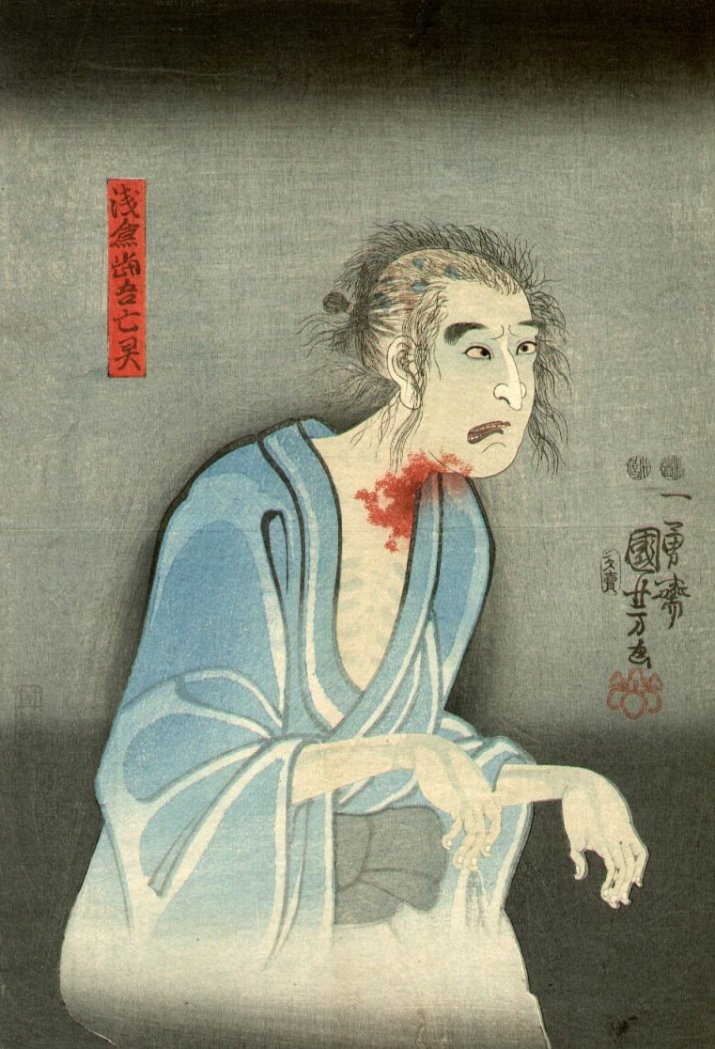 |
||
|
|
Kuniyoshi print published by Sumiyoshi-ya Masagorō in 1851. Private collection. *******
Above is the shita-uri seal, 'restricted sale', mistakenly posted originally as the publisher's seal. Corrected on 12/28/07. |
|
|
|
|
|
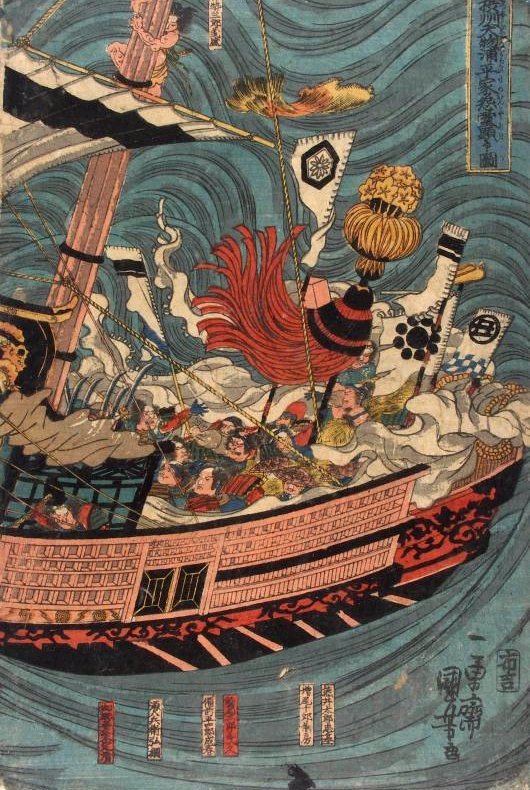 |
||
|
|
Kuniyoshi print published by Nuno Kichi. This example was sent to us by our contributor ED. Thanks ED! |
|
|
|
|
|
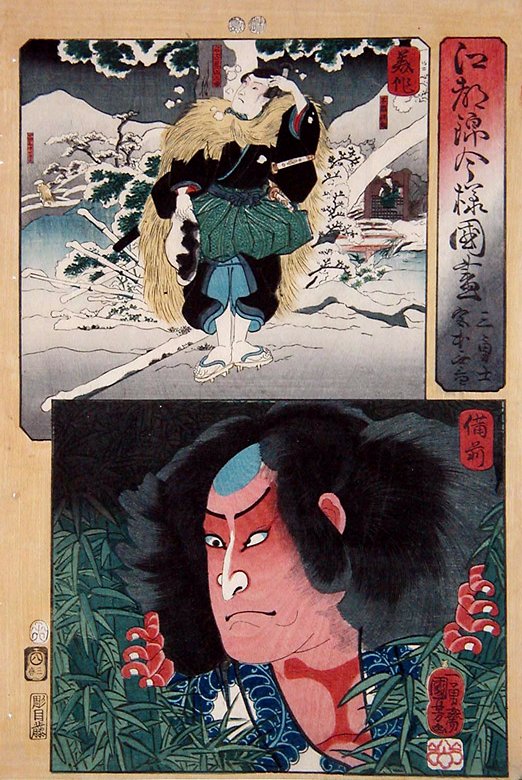 |
||
|
|
Kuniyoshi print published by Mikawa-ya Kihei.
Originally thought to be published by Mita-ya Kihachi in ca. 1852. This example comes from the Eikei (英渓) Collection.
This publisher was misattributed. A reader to this site, ED, noted the mistake and it has now been corrected as of 3/14/07. Thanks ED!
Now even this correction has been corrected! |
|
|
|
|
|
|
|
|
|
|
|
OOPS! I MADE A MISTAKE. SORRY!
When I posted this image I listed the publisher as Jōshū-ya Kinzō based on the identification given by one source. This was wrong. I was so eager to display this print that I did not double check the information. However, an expert contacted me and asked me about this while gently suggesting that the print was published by a different house. I double checked and he was correct. This was very sloppy work on my part and that is why everything you read here should be taken with a pinch of salt. I have now edited this section and apologize for any misinformation and wish I could e-mail everyone who has visited this page up till now.
The Kuniyoshi print "A Man Who Makes Fun of Others" published by Yamato-ya Kyūbei in ca. 1848. Private collection.
I can't post this print without saying a few words. Wow! I never thought I would ever get this close to an original copy of one of Kuniyoshi's composite heads. Not that I haven't tried to acquire one at a fair price, but...
For those of you who are familiar with the 16th century European artist Arcimboldo you will immediately recognize the similarity between that artist's flame licked or floral or vegetable heads and the genius of Kuniyoshi's creativity. Yet, I sincerely doubt that Kuniyoshi knew who Arcimboldo was or had access to any of his images. If this is true then Kuniyoshi was simply reinventing Arcimboldo's wheel. Nevertheless, Arcimboldo seemed to be a one pony show while Kuniyoshi was the whole damned circus rolled up in one creative genius. |
|
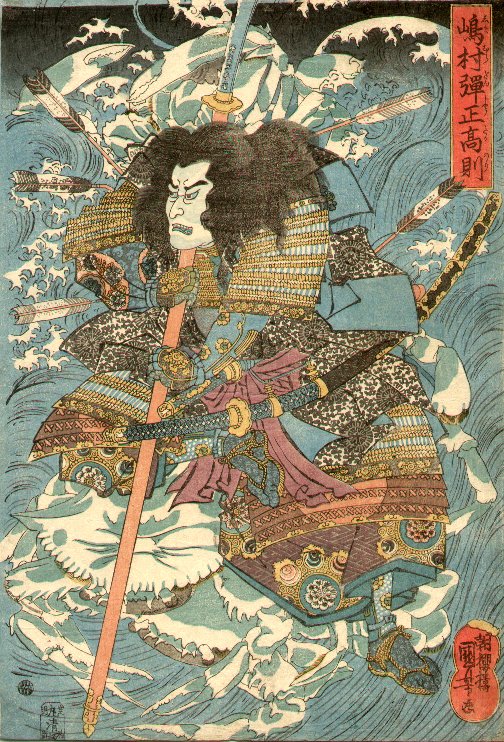 |
||
|
Kuniyoshi print of Shimamura Takanori published by Maru-ya Seijiro in ca. 1843-46. Private collection.
|
 |
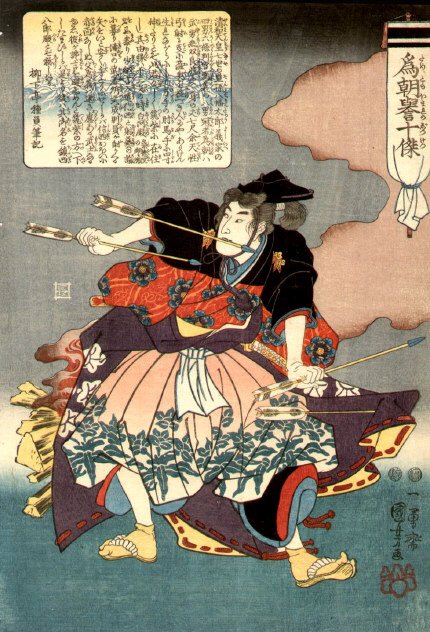 |
||
|
Kuniyoshi print published by Arita-ya Seiemon in ca. 1850. Private collection. |
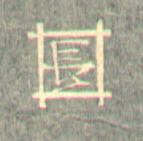 |
|
|
|
|
|
|
|
|
|
|
Kuniyoshi print published by Masugindō in ca. 1847-50. Private collection.
|
|
|
|
|
|
|
|
|
|
|
|
Kuniyoshi print published by Echizen-ya Hachiemon in ca. 1849. Private collection. |
|
|
|
|||
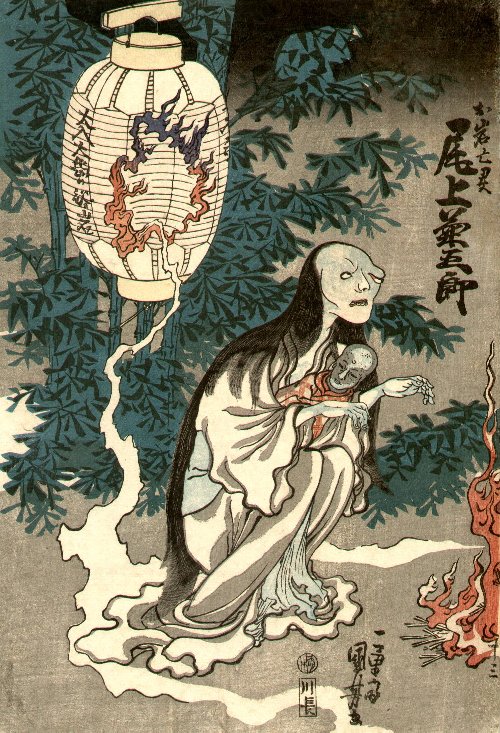 |
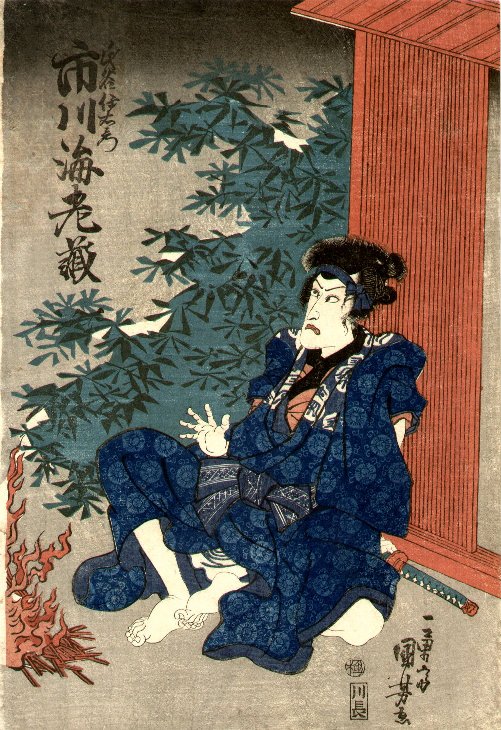 |
||
|
|
Normally I am not one who goes around saying "Rules are meant to be broken", but when I am the one who made them then I think it is important that I show some flexibility. That is why I have decided to include this diptych which was published by the same publisher and with the same seal as one shown on our other page with seals we have not offered. This diptych was sent to me by the same anonymous source who helped me to identify this publisher n the first place. It isn't just out of gratitude that I have included it, but also because the diptych is too damned good to pass up.
Kuniyoshi diptych published by Kawaguchi-ya Chōzō in 1836. Private collection.
|
|
|
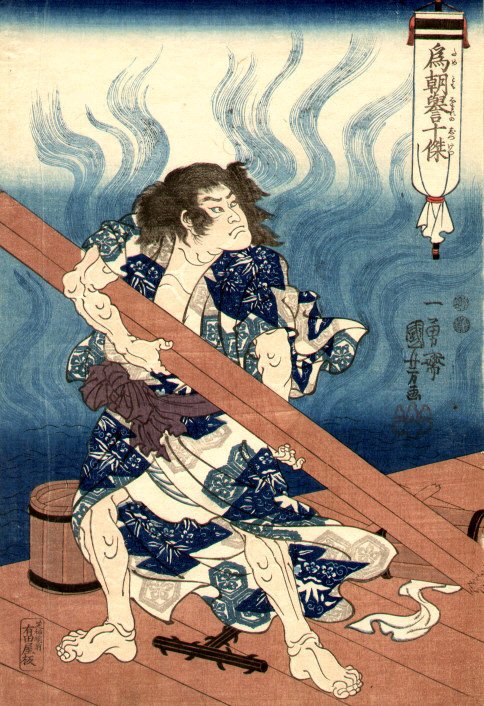 |
||
| Kuniyoshi print published by Arita-ya Seiemon in ca. 1850. Private collection. |
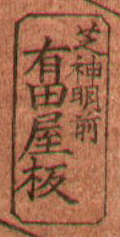 |
|
|
To go to our second page devoted to Kuniyoshi and His Publishers click on the green head below.
|
|
